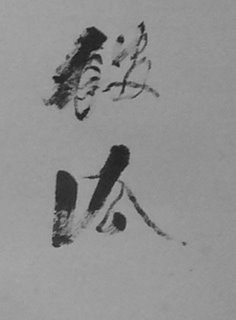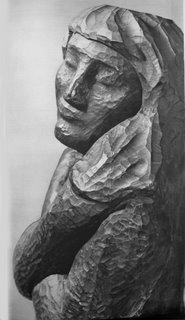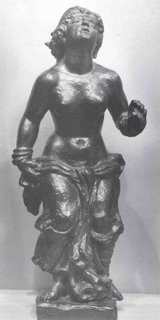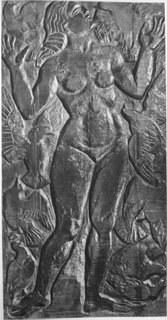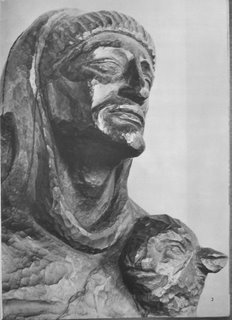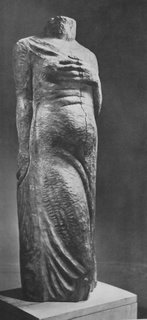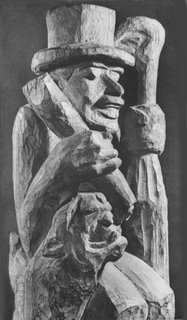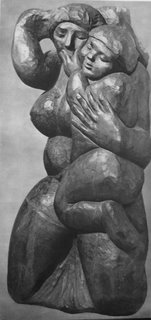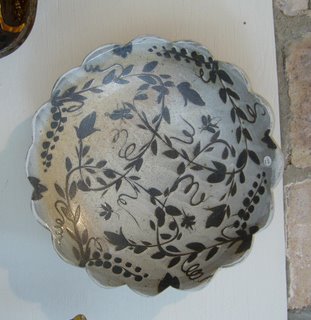
Michael Kline
Every week -- for the past 20 years -- I visit my friend John Putnam -- and every week, for the past three years -- he shows me his latest bowls and cups.
Now this is a fine thing for a friend to do -- to show what he thinks is beautiful -- and it seems that John's curiousity for what he can achieve with clays and glazes is without end.
So... over this period, I've gotten more interested in ceramics -- and now I'm spending more time in the ceramic rooms at the art museum -- the permanent displays of Chinese, Japanese, and Korean -- and the temporary displays of Amerindian and African. Next week, I think I'll post my favorites from the Chicago and Milwaukee museums -- but today I'm going to take you to Oak Park's
Terra Incognito -- a gallery/school of pottery -- to see just what my neighbors have been up to -- and maybe I'm totally ignorant here -- but I don't think I'd be too surprised if the pieces were interchanged -- i.e. if some (most?) of the Oak Park pieces were found in the art museum, and vice-versa.

This is John's piece in the gallery -- displaying his usual interest in brush painting and the complex chemistry of glazes -- and the kind of dark, heavy, masculine feeling (with a light touch) that I associate with him.
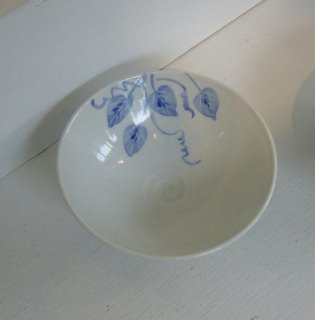
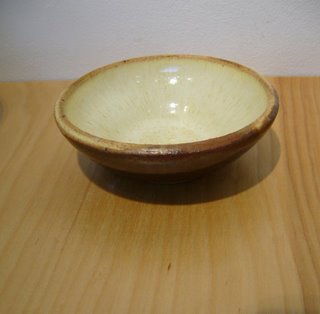
Patricia Sullivan


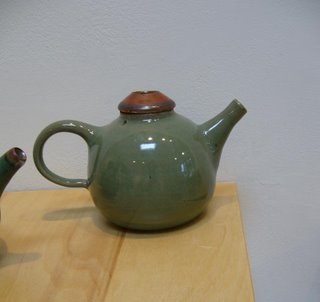
Sara Caswell

Phil Schroeder
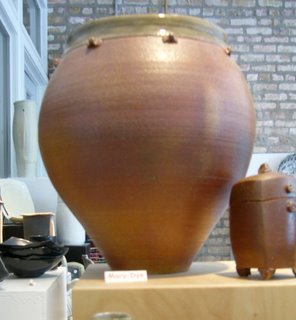
Mary Dye

Felicity Rich
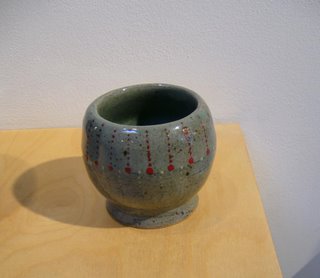
Gail Friedman

Cynthia Harris
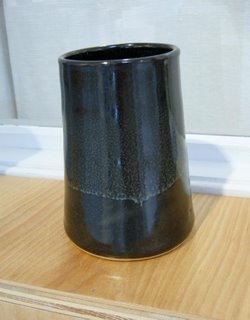
Carian Mclean
The main thing that surprised me was how conservative/restrained most of this show was -- in contrast to the way-too-complex kind of contemporary ceramics I see in museums or ceramic magazines. I guess that's the only kind that attracts professional notice -- but it's the simpler kind that I find more attractive -- even if it does not take years of experience and study to produce. (some of these pieces may have been made by beginners)
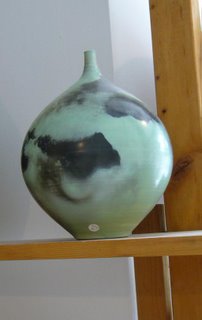
I really like this one --- the smokey-vaporous-cloudy effect (similar to an Amerindian pot dug up from Cahokia.
I've always liked to lie on my back and look up at the clouds (or at least I did back before I felt the pressure of mortality)
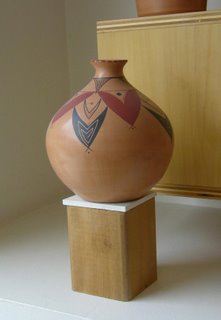
Nancy Desert Lizard Heraty
This one's a more conscious connection to the ancient American southwest -- done by a lady who must have received her name, "desert lizard", while studying with an Indian potter. There's still a show up at the A.I.C. of pottery artifacts from that period -- and I don't really see any difference in level of quality -- although this one feels 1950's American to me.
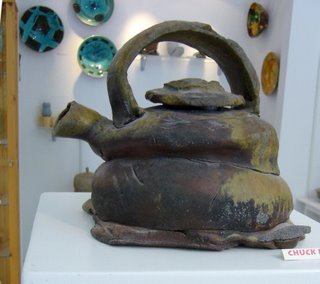
Chuck Hindes
All of things shown above have been clean-and-smooth --- but thanks to the Japanese, we also have a tradition of the opposite -- putting something into a big smokey fire and seeing what happens (it's fun -- I've tried it -- over 50 years ago with toy soldiers and trucks -- and as I get older -- this is how I often feel)

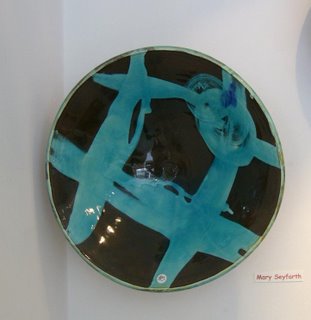
Mary Seyfarth

Mary Seyfarth
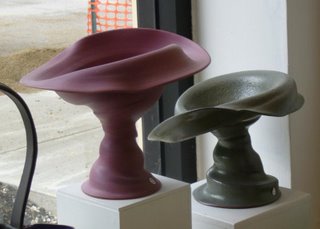
David Toan
I think we owe the above to American abstract painting and sculpture of the fifties and sixties -- or, at least to the part of it that tried to be enjoyable instead of confessional or prophetic. (and I really like Ms. Seyfarth)
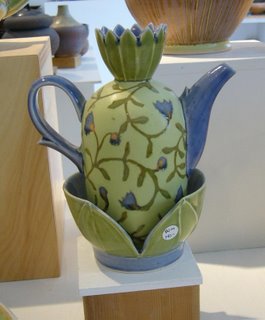
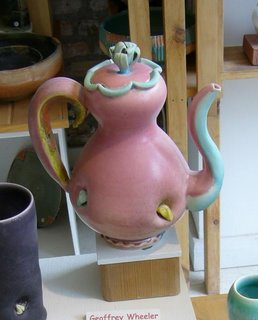
Geoffrey Wheeler
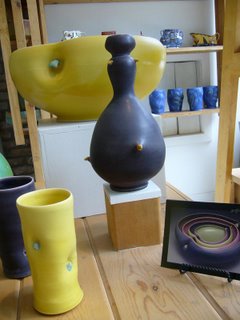
Geoffrey Wheeler
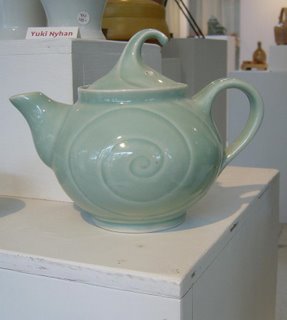
Yuki Onyhan

Posey Bacopoulos

Kit Jones
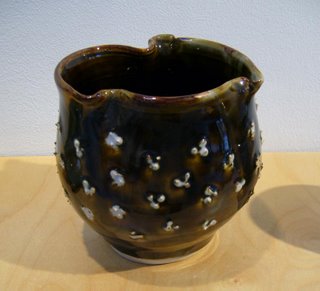
Jami Turano

Don Pilcher
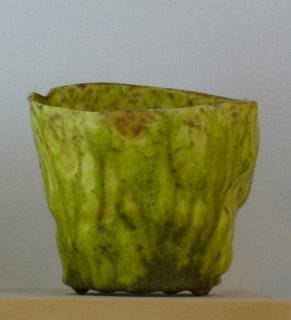
Georgette Ore (AKA Don Pilcher)
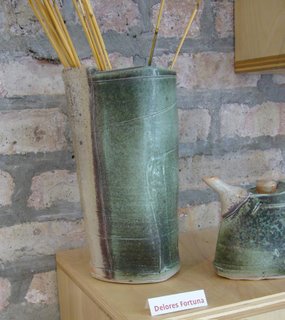
Dolores Fortuna

David Toan
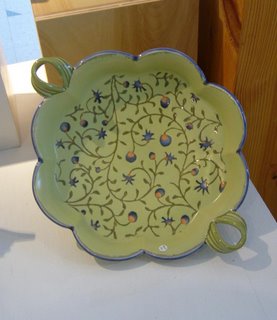
Brenda Quinn
These are the more playful or light-hearted pieces that seem so American suburban to me -- and I envision them in those home-decoration magazines that one finds at the supermarket. ( Which doesn't mean they're bad )
In conclusion -- I liked all of the above -- but there's nothing here I'd want to own -- or travel any distance to see -- except, perhaps, for the plate shown at the very top. But these are things that I'd like to find in the homes of sweet and charming people whom I visit (to contemplate while waiting for dinner)
I found the simple ones the most attractive -- but I think that's just because the more complex ones presented challenges that were not yet met. What I'd really like to see is a revival of pots with figure drawing -- as was done in ancient Greece -- but that might be too much to ask.
............................................................
postscript:
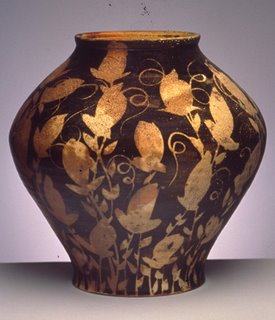
Upon doing a little research, it turns out that Michael Kline, the potter shown at the very top of this post, is not from Illinois at all -- and he currently lives in Bakersville, North Carolina. What an artist ! -- and I suspect many of the other pieces in this Oak Park gallery came from various distant places.

